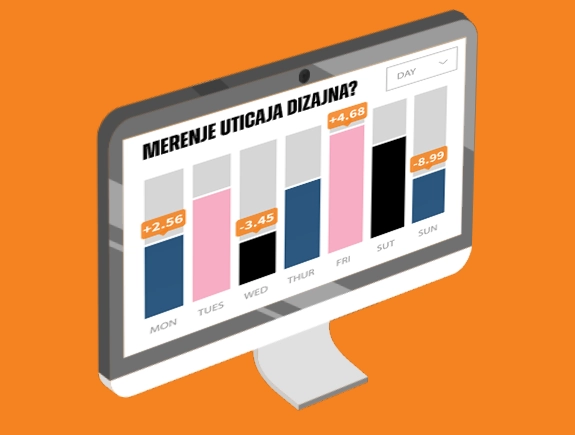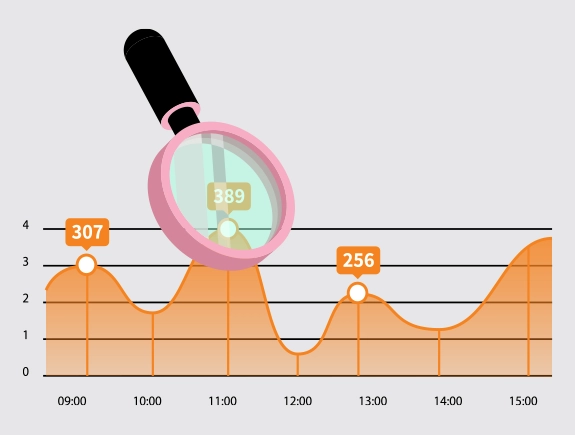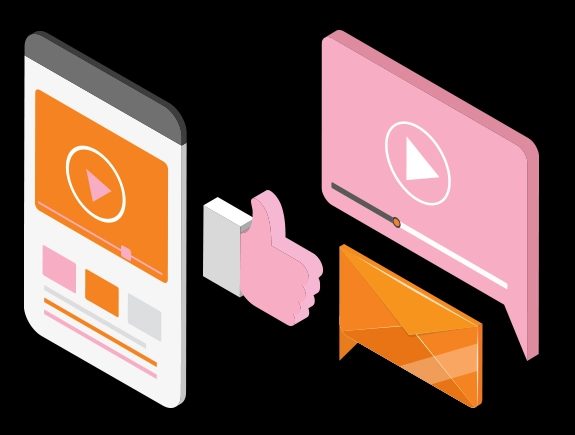Yes, this is a question our clients often ask us. They want to know how the success of a particular design can be measured. Is it measurable at all and if so, how? And this is a completely understandable question because everyone wants to know if they are investing money correctly and how it will pay off.
How design cost-effectiveness has been viewed has changed significantly in the last few years. Previously, it was thought about how something is attractive to customers at first glance and how the color palette is well chosen. But today, the focus is shifting from an aesthetic perspective to how design affects customer behavior and how many are thrilled with a particular visual.
And in order to know how design affects customer behavior, we need to know how to measure its impact. And that’s why we ask a big and important question in this blog:
Numbers matter in design
For some readers, the word “measurement” is likely to evoke negative emotions, because they will expect to read formulas, which will remind them of mathematics. But that won’t happen. The measurement in this case looks a little different. More like a sum of several different factors that should be paid attention to and whose data should be cross-referenced.
It is certain that every designer, in addition to creating an effective brand narratives with the help of design and storytelling (which we wrote about in previous blogs), must also know that monitoring the impact of his design on customers is very important.
When a designer understands the impact of storytelling in design, he can gather a lot of meaningful information and make decisions based on carefully collected data. In this way, the brand narratives will become better and the audience will be able to connect with them easily.
And why should we measure the impact of design on the audience?
Here are some answers to this question:
- Successful design is not only based on quality, but also on quantity. And by quantity we mean numbers and data,
- When we understand data, we also understand our customers,
- With the help of influence we can see what are the weak points of the design and correct them.
Factors we consider when measuring the impact of storytelling in design
In order to measure impact, we first need to identify KPIs or key success indicators. These are the three most important indicators to consider:
- Metrics that show engagement – time spent on the website, bounce rate, how much the content is shared on networks – all these are important indicators of how your brand narrative affects the target group,
- Conversion rate – you need to analyze the conversion rates in the different stages in which the customer was on his way to the final purchase. Analyzing data such as how many inquiries there were or how many newsletter subscriptions there were, will clearly show whether the storytelling was effective,
- Brand perception and its recognition – focus groups, as well as various questionnaires can show very well if something changes in the perception of the brand by customers. Also, their loyalty can be well gauged this way.
The second thing to do is to gather the opinions of customers about everything that the brand has presented in a visual sense, and then conduct testing. And here’s how to collect customer feedback:
- Interviews and questionnaires – the target group should be talked to and answers to important questions collected from them via interviews or questionnaires. Let the questions focus on the design elements within the overall storytelling. It is good to ask how something affected the customers, how clearly the message conveyed what the brand wanted to say, etc.
- A/B testing – always a good way to find out what works best with the audience. Show one version of the design to one segment of the target group and another to another and compare the results. The design that has more success with the audience should be the winner.
The last thing to do is to analyze the data and improve the design according to that data. Here are some steps to follow:
- Analyzing data – analyze data such as those indicating the amount of site traffic, conversion rates and visitor engagement. Identify trends in time and spot visitor behavior patterns to understand what works best for them.
- Quality analysis – what do visitors say, what is their feedback? You should find out what kind of emotions your design evokes in them and if it is in line with what you originally envisioned.
- Design improvement – let the elements you design be based on real data, because only then will the design be created in accordance with the needs of customers.
What does measurement ultimately bring?
After why we measure the impact of design and how we do it, it’s time to finally ask ourselves what this measurement brings us? The data we collected and gave us the answer to the question – how does design affect customers? – will help us a lot in making decisions about how to design for a certain brand in the future.
These numbers clearly show how successful certain visual storytelling techniques are. Also, the figures speak of the success of making good decisions when it comes to choosing design solutions.
And of course, sometimes the assessment is not completely accurate and mistakes happen, so the design does not have the success we expected. But that only happens when it is designed without consulting the data we wrote about in this text.
Therefore, in order not to make mistakes often, it is important to rely on data in our work, because they show very well what the audience wants. Titans know that data is important and pay attention to it when coming up with a new design for each of our clients. One such successful example is the new Organico logo, which was created in accordance with the client’s needs.
If you also need a new logo, packaging design, or a complete visual identity, be sure to contact us. Our designers will present the most creative ideas for your brand that are in line with the needs of your customers.













